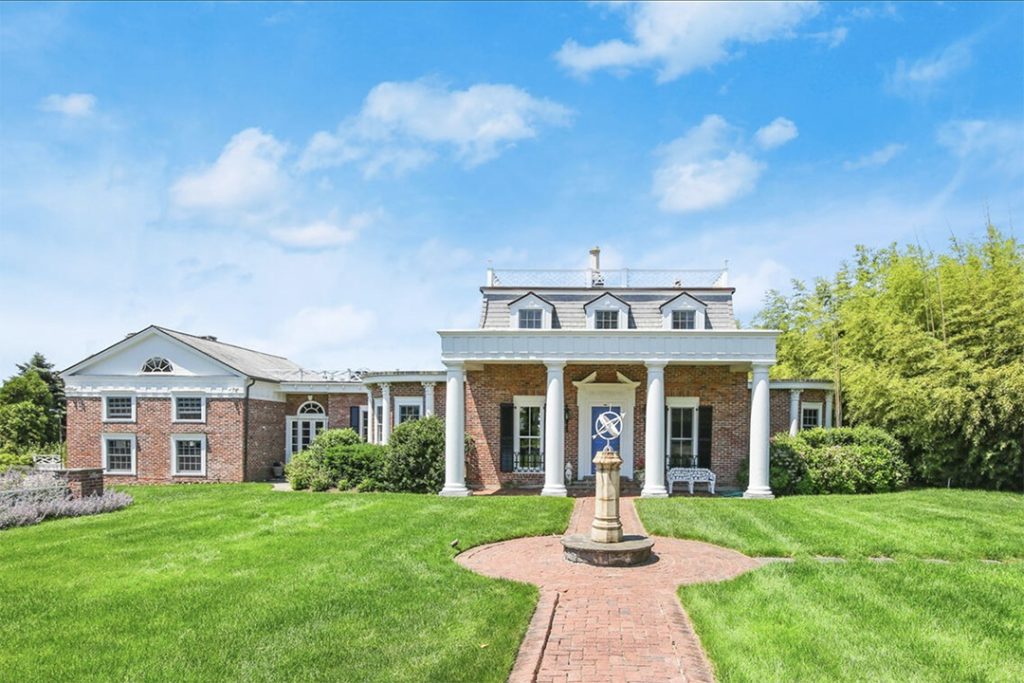House Tour | written by: PAMELA DEY VOSSLER with SHARON RODDA—Houlihan Lawrence and Darien Town Historian MARIAN CASTELL

Guild’s “Little Monticello” and the armillary sphere he placed in front of the home to emulate British country estates / / photograph courtesy: Sharon Rodda, Houlihan Lawrence
Just as our homes capture our stories, so too are they the keepers of our common history, communal by virtue of this town we share as we lay our footprints next to those put down by all who came before us, seeing what they saw, building on what they created.
The wonderfully diverse architectural styles of the homes in Darien — both current and from periods past, form the collective look, feel and character of our town, and through them, we get a sense of where we’ve been, where we are going and who we walk beside.
“Little Monticello,” as it is known colloquially, located at 194 Long Neck Point is one of these iconic gems. Built circa 1930 by long-time Darien resident and gentleman architect Lurelle Guild, one of the leading industrial designers in the early and mid-twentieth century, “Little Monticello” is a reflection of the creative engine that drove Guild’s international success.
A founding member of the Society of Industrial Designers in New York, Guild, who was born in 1898 and lived until 1985, was the man behind the streamlined designs of products mass-produced by companies such as Electrolux, Alcoa, International Silver Company, Pullman Company, the Aluminum Cooking Utensil Company and Revlon.
His designs can be seen at museums and galleries such as the Metropolitan Museum of Art, the Smithsonian Design Museum, Cooper Hewitt, the Carnegie Museum of Art, the Yale University Art Gallery and many others.
Guild and his wife, Ann, moved to Darien in 1929. They were voracious collectors of American antiques. Their passions culminated in Milestone Village, a replica of a colonial town consisting of Guild’s take on scaled down versions of the buildings you’d find in an eighteenth or nineteenth century American community.
Constructed on the two acres they owned on Swift’s Lane, it was rarely open to the public because of zoning regulations. “Little Monticello” is one of the many homes Guild built in Darien, establishing yet another outlet for his abundant creative energy, vision and passion to manifest the Americana he loved in inventive and fanciful ways.
Interestingly, this same passion was the foundation and muse for his modernistic industriaI design skills.
As John Stuart Gordon, PhD and Benjamin Attmore Hewitt curator of American Decorative Arts at Yale University Art Gallery, wrote in his seminal 2013 dissertation, Lurelle Guild’s Historical Modernism: Americana and Industrial Design, “The knowledge (Guild) acquired of period styles and construction techniques provided invaluable source material for creating products that appealed to a broad range of American consumers, not only for their appearances but also for their intrinsic historical associations.”
“(Guild’s) example sets a challenge to look at twentieth century design in a pluralistic manner in which the historical and the modern are not opposites but intertwined,” Gordon continued.
He went on to add, “Guild engaged with what he saw as the cyclical nature of style in order to utilize his veneration of colonial America to establish a useable past with which to form a modern future.”
As “Little Monticello” goes on the market for the first time ever, (having been held the last 50 years by the owner who bought it directly from Guild), it arrives with the historical and the modern even more tightly knit. With additions and updates from the current owner — including a Vincent Wolf Designer Kitchen, a pool and enhanced gardens accenting its gorgeous acre of sweeping flat lawns — combining with Guild’s original high ceilings, charming moldings, rounded library, circular dining room and other striking constructions, the past and the present continue to converge in this property as it moves toward its future.

